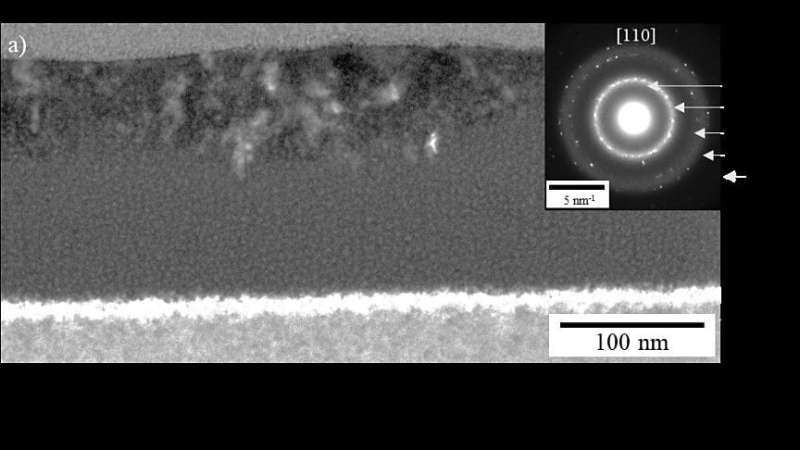This article has been reviewed according to Science X's editorial process and policies. Editors have highlighted the following attributes while ensuring the content's credibility:
fact-checked
trusted source
proofread
Quantum computing could get boost from discovery of Q-silicon

Researchers at North Carolina State University have discovered a new distinct form of silicon called Q-silicon which, among other interesting properties, is ferromagnetic at room temperature. The findings could lead to advances in quantum computing, including the creation of a spin qubit quantum computer that is based on controlling the spin of an electron.
"The discovery of Q-silicon having robust room temperature ferromagnetism will open a new frontier in atomic-scale, spin-based devices and functional integration with nanoelectronics," said Jay Narayan, the John C. Fan Family Distinguished Chair in Materials Science and corresponding author of a paper describing the work published in Materials Research Letters.
Ferromagnetism in materials outside of transition metals and rare earths has excited scientists worldwide for a long time. This is because spin-polarized electrons can be used to process and store information with atomic resolution. However, materials with even numbers of electrons, such as carbon and silicon, without unpaired spins were not considered seriously in terms of bulk ferromagnetism. The dangling bonds in bulk carbon and silicon materials usually reconstruct and eliminate sources of unpaired electrons.
The NC State researchers showed that laser melting and quenching silicon can result in the formation of Q-silicon. The entire process is completed in less than a fraction of a microsecond, or millionth of a second. Narayan pioneered the use of lasers to create new materials with novel properties in work spanning more than four decades.
Besides ferromagnetism, other Q-silicon properties of interest include enhanced hardness and superconductivity, Narayan says.
"This discovery of Q-silicon stands to revolutionize modern microelectronics by adding new functionalities, such as spintronics, or spin-based quantum computing," Narayan said. "Modern microelectronics is based upon the charge of an electron, making them relatively slow with limited mobility. By using Q-silicon, we make use of the spin of the electron, making computers much faster with negligible power consumption.
"In short, Q-silicon provides an ideal platform for integration of spintronics with microelectronics on a chip," said Narayan.
More information: Jagdish Narayan et al, Synthesis and novel properties of Q-silicon (January 2023), Materials Research Letters (2023). DOI: 10.1080/21663831.2023.2224396
Provided by North Carolina State University




















